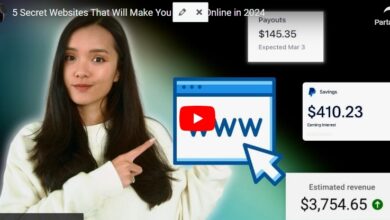YouTube Monetization: Top 10 Ways to Monetize YouTube
There’s no denying that video content is more popular than ever. In 2020 alone, people watched over 12 billion minutes of video online—and they want more.
For digital content creators and businesses alike, this is a great time to focus on video content. With YouTube’s monetization features, you can do just that.
In this article, we’ll define YouTube monetization, its terms and requirements, and how to monetize your YouTube videos.
What is youtube monetization?
In simple words: YouTube monetization is the ability to earn money from your videos.
To enable monetization on YouTube, you must meet certain requirements and join the YouTube Partner Program (YPP).

According to YouTube, to be eligible for monetization, you must have:
- 4,000 watch hours in the last 12 months
- At least 1,000 subscribers on your channel.
You can increase these numbers by creating quality content as well as promoting your channel.
Apart from this, there are some other requirements to set up your channel and monetize it. We will discuss them in the next section.
YouTube Monetization Terms and Requirements
Monetizing your YouTube channel is as wonderful as it sounds, but there are some strings attached to it. Although the YouTube monetization requirements are not logged, the benefits are great.
Simply put, once you join the YouTube Partner Program (YPP), it depends on how well your videos perform. The more views you get on your content, the more money you can make.
Let’s look at the different requirements to start monetizing your YouTube videos:
Apply to YouTube Partner Program
The first step is to apply to the YouTube Partner Program (YPP).
YouTube takes at least a month to review applications before making a decision. This can take more than a month, mainly because YouTube has real experts reviewing each application.
The minimum eligibility requirements to join YPP are:
- Your channel has at least 1,000 subscribers
- You have at least 4,000 valid public viewing hours in the last 12 months
- You live in a country where the YouTube Partner Program is available
- You have an AdSense account linked to your YouTube channel
- There is no active community guideline strike on your channel
- You comply with all YouTube channel monetization policies
- For an added level of security you should use 2-Step Verification on the Google Account associated with your YouTube channel
Avoid copyright and monetization mistakes on YouTube
It is important to follow YouTube’s copyright and monetization rules at all times. Meaning, you should only upload videos that you have created or are authorized to use. Copyright also extends to music or audio tracks, other copyrighted works, or videos created by others.
If you are caught violating any of the policies, you may be subject to:
- Remove ads from your videos
- Suspended from YouTube Partner Program
- Account suspension or termination
YouTube states that they will always notify you via email if you violate any of their policies. They will also tell you about the options available to you, if any.
What to do if you get rejected by the YouTube Partner Program
If your application is rejected, YouTube will state which policies your channel failed to comply with. If so, don’t panic. You can re-apply anytime after 30 days. Use this as an opportunity to improve your channel before applying for a second time.
For example, you may want to revisit any video titles, video descriptions, and thumbnails to align them with YouTube’s policies. And you may also want to delete or edit them if you have specific videos that are causing problems.
Top 10 ways to earn money on YouTube
We have completed the requirements to start monetizing on YouTube. Now let’s get to the more exciting part: exploring all the different ways to monetize your YouTube videos.
You must be wondering how much money YouTubers actually make. While some of the highest paid YouTube creators make millions of dollars from their videos, not every creator manages to make that much. In fact, the average YouTube channel earns around $18 per 1,000 views.
YouTube has changed the way creators earn money online and on the platform.
Let’s take a look at the top 10 ways to make money on YouTube:
1. YouTube Ads
The most “traditional” way to make money on YouTube is through ads that appear before or during your videos.
If you’ve joined YPP, you can turn on ad monetization for individual or multiple videos on your channel. Keep in mind that your video must meet YouTube’s advertiser-friendly content guidelines to be able to run ads.
With the many YouTube ad formats available, you are able to control the placement of ads on your videos.
2. Paid Sponsorship
Paid sponsorships are when brands and businesses pay or sponsor a content creator to pay for, use, or display their product in a video. While sponsorships are provided by the brand to the creators, it benefits both the parties as well as the audience.
Getting sponsorship is difficult, but can be extremely rewarding. If you have an influential channel that has a lot of followers, you can pitch relevant brands in your niche to partner for videos.
To secure sponsorship, show brands your past work, YouTube analytics, and engagement rates. Explain to them how you can bring value to their business with your content.
3. Allies
Another way to monetize your YouTube videos is through affiliate programs.
how does it work? When you engage in an affiliate marketing program, you send your audience to a brand’s product or landing page via an affiliate link. If the user successfully makes a purchase, you earn a commission from the sale.
While not as lucrative as paid sponsorship, an affiliate program still generates additional income. You can become an affiliate for products you’re already using, and even offer discount codes to your followers.
4. Channel Subscription
YouTube channel subscriptions are monthly subscriptions in return for special benefits. Creators can offer channel members special offers like product discounts, 1:1 live chat or exclusive videos.

Membership fees are set by the manufacturer, and channels need to have at least 1,000 subscribers to enable this feature.
5. Protection
If you have a loyal fanbase, a third-party platform like Patreon lets digital creators, artists, writers, and businesses provide exclusive benefits to the patrons who support your channel and content.

Patreon is popular with YouTube creators and brands, as are YouTube channel subscriptions. But with tiered membership, you can choose from different perks to offer patrons regardless of the number of subscribers., Provide exclusive content such as behind-the-scenes videos or features such as early access and face-to-face,
6. Merchandise
YouTube channels with more than 10,000 subscribers can sell merchandise through the Merchant Shelf that appears on each video page. If you’ve built a strong brand community, you can open up another source of revenue by selling branded merchandise to your fans on YouTube.

This is especially useful for YouTube creators who may not have their own website and want to sell merchandise to their followers. With over 45 supported merchant platforms or retailers around the world, you have the opportunity to grow your brand.
7. SUPER FEATURES: Super Chat, Super Stickers, Super Thanks
If you’ve ever watched a livestream on YouTube, you may have noticed that some chat messages stand out and are highlighted on others.

This is because YouTube allows creators to enable super chat on their live videos and premieres. This monetization feature allows your viewers to pay between $1 to $500 to have their message displayed in a livestream chat.
in the same line, super stickers Work just like Super Chat.
Instead of buying chat messages, users can buy and share fun stickers. These stickers are then pinned to the top of the chat stream to grab the attention of your favorite creator.
And finally, super thanks The feature allows users to appreciate their favorite creators. By donating a small amount, users receive a featured comment in the livestream chat as well as an animated GIF.

Unlike Super Chat and Super Stickers, users can buy Super Thanks on this Any Uploaded videos, not just livestreams and premieres.
These are great features for digital creators or brands looking to create useful and educational videos. These super features not only generate some extra income, but it also allows your top fans to show their support and gratitude for your content.
8. YouTube Short Fund
In May 2021, YouTube launched a $100 million fund exclusively for shorts creators. This money is to be distributed every month to YouTube Shorts creators during 2021-2022.
This means that every month, YouTubers can earn anywhere from $100 to $10,000 depending on the engagement and views on their short videos. And eligibility refreshes every month, so if you don’t qualify for one month, you can qualify for the next month or vice versa.
To receive YouTube Shorts Fund, you don’t need to be part of the YPP, so for creators not meeting the requirements of the YPP program, this is a huge advantage. But, creators still need to meet certain eligibility requirements in order to qualify for the YouTube Short Bonus.
9. YouTube Premium
YouTube Premium is a subscription service offered by YouTube. Members can watch ad-free content, download videos, enable background playback, and more.
So, how does this affect monetization? Will creators who monetize their videos through ads still get paid if YouTube Premium members watch their videos? Fortunately, yes.
According to YouTube, subscription revenue payments are distributed to creators at the beginning of each month, just like ad revenue payments. Of course, this amount depends on how much premium members watch your videos.
10. YouTube Brand Connect
YouTube BrandConnect connects brands with YouTube creators for content campaigns. Audiences trust creators when it comes to product recommendations. And can use BrandConnect — yes — to connect YouTube channels with brands for partnerships
The service is currently only available in the US, Canada, and the United Kingdom.
Earn money from your videos with YouTube monetization
Creating and publishing videos just for brand awareness is not great. It’s also a great way to support yourself by monetizing YouTube.
Are you ready to grow your YouTube channel? If your goal is to start monetizing on YouTube, start by branding your YouTube account. Then promote your channel and get more views on your videos. Remember, the more views and subscribers you have, the more opportunities you have to monetize the platform. Cha Ching!
The post YouTube Monetization: Top 10 Ways to Monetize YouTube first appeared on Sprout Social.






